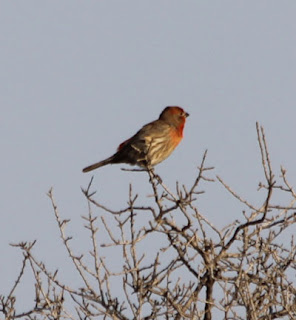
Afternoon temperatures approach ninety degrees finally got to us and as much as we loved the spectacular scenery of Big Bend National Park, we decided to move north to slightly cooler climes.
It was also frustrating to be constrained so much with the dog — since she could not go on trails even with a leash. And, the long drives and gas at $3.75 got old after a bit. Still, it was a wonderful place to get to know a bit – and well worth the drive. (The photo of Mary was taken at Sotul Point, and also shows the gap for the Elena Canyon of the Rio Grande far off.)
Right across from our campground is the Mexican village of Boquillas Del Carmen — a very small community that is quite isolated. Years ago, before 9/11, it was a common practice to cross the river and have dinner in one of the informal cafes — usually in people’s homes — and get a taste of authentic Mexico. Now, the closest legal border crossing is 100 miles away or so.
Mexicans — probably youngsters — cross the river nightly and leave items for sale on rocks where Americans will see them — usually with a note listing suggested prices and a small jar for money. Carved walking sticks, simple jewelry — all illegal as can be. It’s tempting and as Mary said, she’s tempted just to leave some money. We bought our walking sticks, from the town through some special legal arrangement by the Park Service, at about three times the price on the rocks. If only the extra money went across the border. (The sunset photo shows some of the items in the foreground.)
 We left Big Bend and drove close to 100 miles before leaving the park — then headed north through some tough country up to Alpine — where the famous Cowboy Poetry Festival is taking place this weekend.
We left Big Bend and drove close to 100 miles before leaving the park — then headed north through some tough country up to Alpine — where the famous Cowboy Poetry Festival is taking place this weekend.
Just twenty miles north is Fort Davis, named for Jefferson Davis, who was Secretary of War when the fort was built back in the middle 1800’s. It’s a cow town — the largest community in the county — but likely not an Obama hotbed. We are camping at Davis Mountains State Park, which is just out of town and at elevation 5,000 or so, is ten to fifteen degrees cooler than big bend. Some good birding here and it should be a good stay.
In a “small world” happenstance, we are camped next door to a couple from Barre, Vermont who we briefly met at Big Bend.











